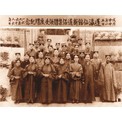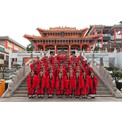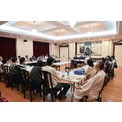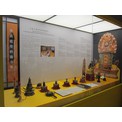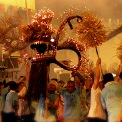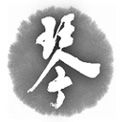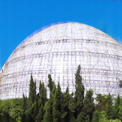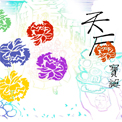 Collections
Collections The Oral Legacies (I) - Intangible Cultural Heritage of Hong Kong
The Oral Legacies (I) - Intangible Cultural Heritage of Hong Kong Quanzhen Temples Taoist Ritual Music
Quanzhen Temples Taoist Ritual Music Perpetuation of the Heritage
Perpetuation of the Heritage
Fung Ying Seen Koon is the applicant for inscription of Quanzhen temples Taoist ritual music onto the fourth national list of intangible cultural heritage. With a lineage that can be traced back to the historical Sanyuan Temple of Guangzhou, it is one of the earliest among Quanzhen temples in Hong Kong to perpetuate the “Quanzhen Longmen School”, being formally established as among those in the “hundred character” list of transmitters in the form of a poem in Chinese. Fung Ying Seen Koon is one of the examples chosen to illustrate the development and legacy of Taoist ritual music in Hong Kong.
As one of the earliest Quanzhen Taoist temples in Hong Kong, Fung Ying Seen Koon was the home of many Taoist priests arriving in Hong Kong in the early days of local Taoism. By the 1950s and up until the 1970s, two Taoist masters, Hou Baoyuan and Deng Jiuyi, had been in residence there to teach and spread rituals, scriptures and jingyun. They had trained up many high priests and in particular, a huge number of scripture chanters.
In the training of scripture chanters, Fung Ying Seen Koon at first only accepted male followers. But later, it amended its statutes in 1966 to allow for the admission of women as apprentices from the Chong generation onwards. From then on, both men and women trained in rituals and scriptures with no further need to seek recruits elsewhere.
From the 1980s onwards, the training of such chanters and ritual masters entered a new stage. Mak Bing-kee started classes in scripture and liturgy. It was a total breakthrough from the face-to-face, master-disciple mode of teaching in the past.
From 1992 onwards, regular training programmes in scripture chanting were held, recruiting not only ordained disciples within the temple, but also believers and interested individuals from the general public. It has groomed a considerable number of high priests and batches of scripture chanters, nurturing new blood for the continuation of the musical tradition of the Hong Kong Quanzhen School.
Apart from collecting and preserving relics and records of the Sanyuan Temple in Guangzhou, Fung Ying Seen Koon has compiled six sets of ritual music notations with the help of experts, including Qingwei Lidou Ke, Xuanmen Kaiwei Ke, Xuanmen Shezhao Ke, Guan Deng San Hua Ke, Xuanmen Qishi Ke and Xian Tian Hu Shi Ji Lian You Ke. In the past ten years, it has also made immense efforts in the production of videos and audios of Taoist ritual music, keeping alive its sights and sounds through the use of modern electronic technology. Between 2001 and 2002, Fung Ying Seen Koon even brought scripture chanting and liturgy to Hiang Tong Keng of Singapore, and succeeded in spreading Quanzhen School ritual music to Southeast Asia.
Quanzhen temples Taoist ritual music was inscribed onto the fourth national list of intangible cultural heritage in 2014.
